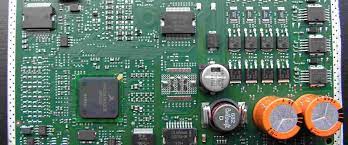Automtive Control System Electronic PCBA for Suspension and Engine Functions
Name: Automtive Control System Electronic PCBA for Suspension and Engine Functions
Copper Thickness: 1 oz, 0.5 oz ~ 7.0 oz
Application: for Automtive Control System
Board Thickness: customized
Base Material: FR-4
Surface Finishing: HASL Lead Free
What exactly does Electronic PCBA for an autonomous control system mean?
PCBA, or printed circuit board assembly, is an abbreviation for automotive control system electronics. A system that regulates numerous activities and functions within a car is known as an Automtive Control System Electronic PCBA. This can include electronic systems that affect the vehicle’s overall performance, safety, and efficiency, such as those that handle the engine, the gearbox, the braking system, the steering system, the suspension system, and other electronic systems.
- This indicates that electronic components and circuits are used to run the control system rather than mechanical or hydraulic methods. Modern automobiles may now be equipped with cutting-edge features and function thanks to electronic control systems that offer precise control. A PCB is a flat piece of insulation (usually fiberglass) with printed or etched conductive traces.
- It functions as a surface for mounting and joining electronic parts. The assembly of electronic components such as microchips, resistors, capacitors, sensors, and other elements necessary for the operation of the control system onto the PCB is called PCBA.
Leadsintec is the highest quality producer of electronic PCBA for automatic control systems:
- The cutting-edge solution created especially for the automobile sector is automobile Electronics PCBA (Printed Circuit Board Assembly). Manufacturing and assembling electronic components onto printed circuit boards that adhere to the exacting specifications and standards of the automobile industry is called automotive electronics PCBA.
- We provide Automtive Control System Electronic PCBA at our specialized facilities designed to satisfy the exacting requirements of automotive applications. Your electrical systems will be of the greatest possible quality, dependability, and safety thanks to our experience in automotive electronics.
- We use cutting-edge machineries, such as automated assembly lines and precision soldering procedures, to ensure precise component placement and dependable solder connections. Our knowledgeable experts implement strict quality control methods to ensure adherence to automotive norms and requirements.
- We provide a variety of automotive electronics PCBA services, including those for engine control units, lighting systems, and other automobile components. We are aware of the particular difficulties and demands the automotive sector faces, including its sensitivity to temperature extremes, tolerance to vibration, and electromagnetic compatibility (EMC).
Uses for automatic control systems Electronic PCBA:
Printed circuit board assemblies (PCBAs) for automotive control systems have a variety of uses in contemporary automobiles.
-
Engine Control Unit (ECU):
The ECU is in charge of monitoring and managing several engine functions, including fuel injection, ignition timing, and emission control. The electronic parts and circuits necessary for the operation of the ECU are housed on the PCBA of the automobile control system.
-
Anti-lock Braking System (ABS):
ABS helps the wheels from locking up during braking, which enhances the vehicle’s control and stability. The ABS control module uses an electronic PCBA to process sensor data and regulate braking pressure on specific wheels.
-
Electronic Stability Control (ESC):
ESC improves vehicle stability by spotting and addressing sliding or traction loss. The ESC system uses a control module with an electronic PCBA to monitor numerous factors, including steering angle, wheel speed, and lateral acceleration, and selectively break certain wheels to maintain stability.
-
Airbag Control Unit:
When there is a collision, the airbags are deployed by the ACU. It decides when and which airbags to deploy after receiving data from collision sensors. Processing sensor data and starting the airbag deployment procedure are done by the ACU using an electronic PCBA.






